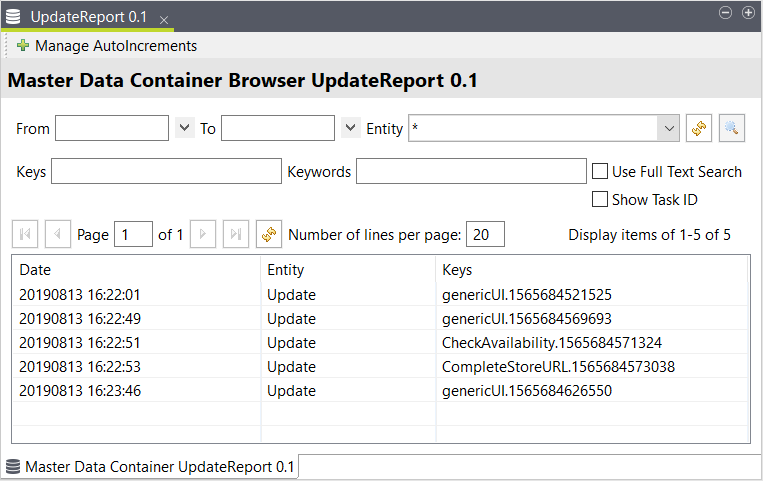Event management
Event management and real-time integration are an important part of Master Data Management. Talend MDM provides both functionalities with dedicated MDM objects as follows:
-
The Event Manager in Talend Studio "listens" continuously for "events" that happen on the MDM Hub,
-
An event happens when some data is modified, added or deleted in the MDM Hub,
-
Talend MDM captures the event with an Update Report that gathers the event audit log information,
-
A Trigger is used to launch a Process when an event corresponds to this Trigger execution conditions,
-
A Process, which is an action that usually executes a Talend Job, is launched by the Trigger.
Any event in the MDM Hub generates in Talend Studio an Update Report which gathers the event audit log information. This information includes the type of action (create, delete, update), the user who performed the action, source of action (Job, Talend MDM Web UI, etc.), modified attributes with old and new values and finally timestamp of action. The Update Reports are stored in Talend MDM as an XML document like any other master data but with a pre-defined, static data model.
To access these Update Reports, do the following:
-
In the MDM Repository tree view, expand Data Container - System and then double-click UpdateReport.
A dialog box is displayed.

The key of the event record is different depending on the working mode of your MDM server:
- for the standalone mode, the key is composed of the Source value and the TimeInMillis value of the record, concatenated using a period, for example, genericUI.1552964721309.
- for the cluster mode, the key is the UUID value of the record, for example, 814da0a4-1c55-453d-bfab-312c2d8e2165.
-
Set parameters to filter the Update Reports you want to display, if required, and then click the
 icon to display a list of the events done on master
data in the MDM Hub.
icon to display a list of the events done on master
data in the MDM Hub. -
Double-click any of these event to display a dialog box. Here you can see a detail audit log information about the selected event.

-
If required, click Source to display the log information in an XML document.
The following sections give a detailed explanation about the Processes and Triggers involved in the event management mechanism.
